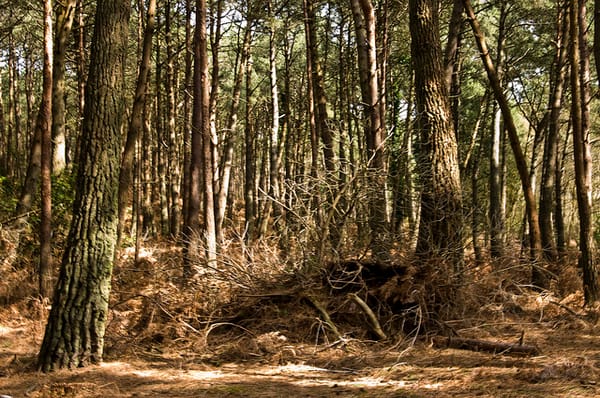Fear Factor: Zombie ants
Fear is one of the driving factors of human behaviour, but not everything we see in horror films is a fantasy. Science already has a wealth of horrific things, starting with parasitic fungi and moving up to bacterial mind control.

Humans thrive off fear. Many put themselves in situations to induce a sense of tension, of being utterly in the moment, feeling truly alive; fear is a motivator for many a near-life experience, after all. These instances are fairly regular occurrences: be it horror films, deciding autonomously to visit Metric on a Wednesday evening during Fresher’s Week or, perhaps for the downright foolhardy, deciding to visit once again the week after.
Looking around a busy tube train filled to the brim with hordes of commuters, myself included, momentarily brain-dead to their surroundings, what better place to start than with man’s undead counterpart: the zombie.
Zombies are a nightmare, but surely nothing more than that? Nature is a wonderful awful thing, however. There is a parasitic fungi capable of commandeering the bodies of not-long dead ants. Researchers noticed that fossilised remains of leaves bared the hallmarks of tiny ant bites. These fossilised leaf remains date back approximately 48 million years ago and were found at the Messel Fossil Pit in Germany. Independent of this, the same ant bite marks were taken from the underside of leaves in southern Thailand. As a prior warning, if you’re an ant, this next section may make for some grim reading.
“Zombies are a nightmare, but surely nothing more than that?”
The bite marks are indicative of ants in their death-throws. Having been infected with a parasitic fungus, known (not colloquially) as Ophiocordyceps unilateralis, this fungus modifies the ant’s behaviour. In some sense, having been infeced by the fungus, the ant is already dead.
Professor Matthew Fisher from Imperial College London said that the fungus appears to secrete metabolites, Guanidinobutyric Acid (GBA) and Sphingosine, that are “likely involved in zombifying their hosts” by hijacking the ant’s central nervous system. The ant climbs to approximately 25cm above the forest floor, biting onto leaves in the lower canopy, evidenced for by the scars seen on leaves in the Rhine Rift Valley. The fungus grows as a spine through the back of the ant’s head. Once the ant dies, the spores held within the spine explode out and shower onto other ants on the forest floor, spreading the infection once again.
The fact that evidence for this symbiosis exists through varying different epochs to the present day is testament to the tenacity of the infection. With little to no protection for the ants, the only solution offered by the colony is to carry off infected members to avoid colony-wide infection in what sounds like a somewhat less PG sequel to Pixar’s A Bug’s Life.
“Toxoplasma gondii infects more complex mammals, including humans”
OK. OK. I hear what you’re thinking. This is pretty creepy stuff, but there’s a pretty big distinction between ants and humans. Tell me when undead humans can be parasitically reanimated. In fact, maybe don’t talk to me even then.
Enter Toxoplasma gondii, which infects many more complex mammals, including humans. This parasite, while not a fungus, has been known to alter the host’s behaviour, encouraging risky or even impulsive decisions which may act to maximise the possibility of transmission of the parasite to further hosts. Luckily, the behavioural effects have not yet included climbing into trees to maximise the efficiency of spreading infective spores (This is perhaps something that the observant reader should watch out for this Halloween). Professor Fisher, noticing my distress, added that “examples of fungi maximising their potential for transmission in higher organisms are, fortunately, rare”.
While the chances of a full-blown Walking Dead style apocalypse may still be fortunately low, the possibility of behavioural modification due to the presence of parasitic infections – immensely interesting and infinitely sellable to Hollywood – is still a pretty freaky prospect.







